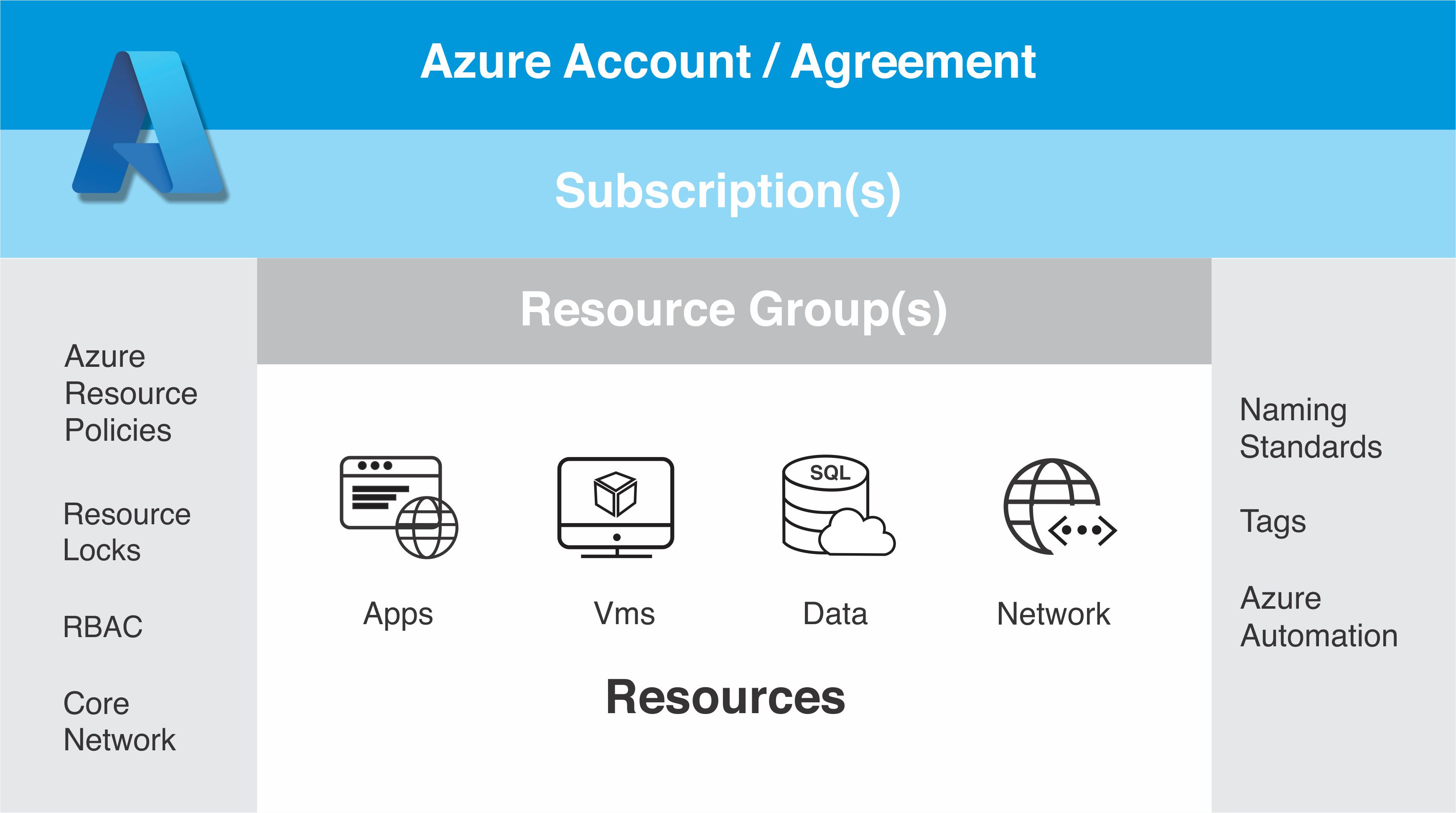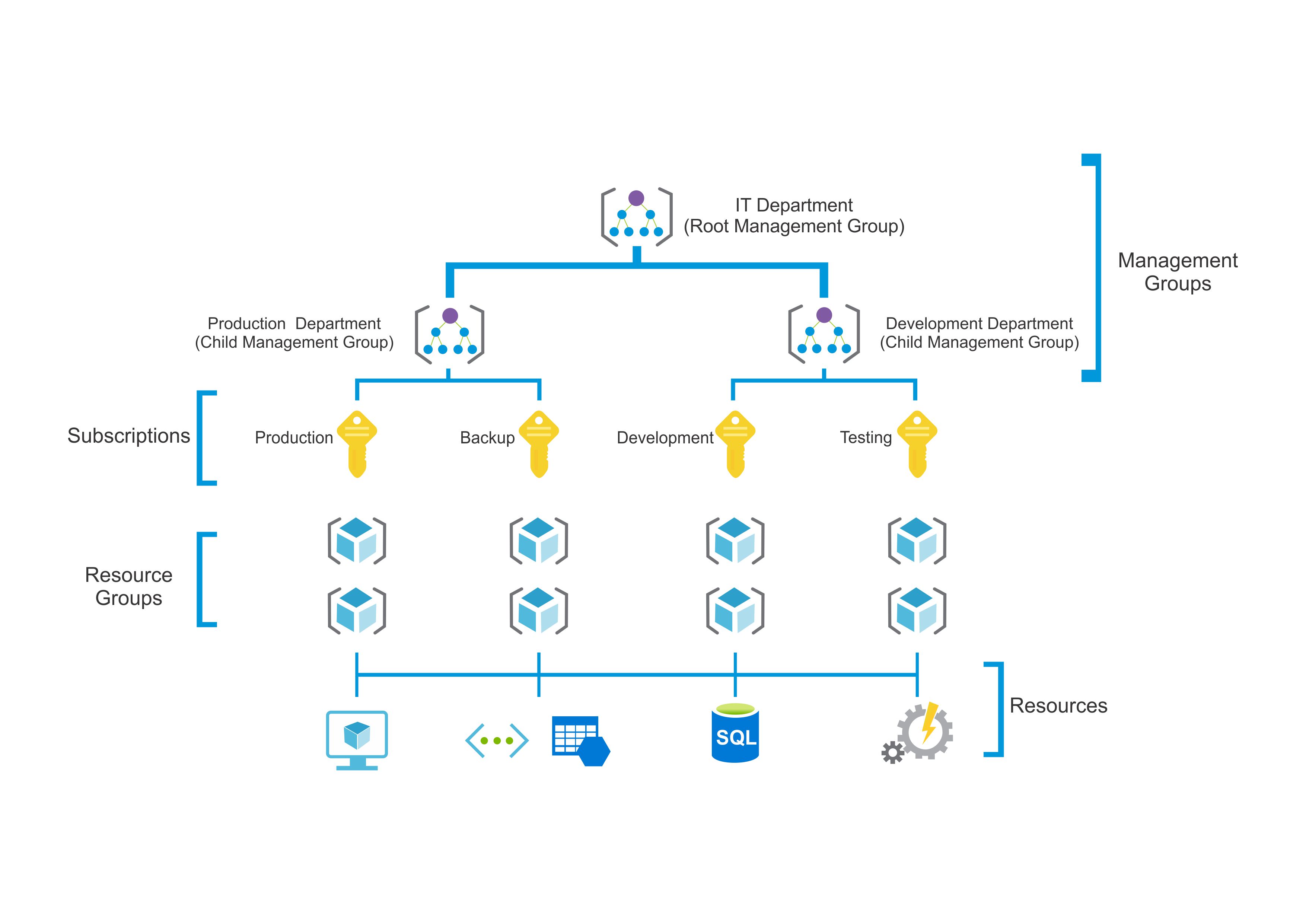Microsoft Azure: A Deep Dive into Subscriptions, Management Groups, and Resource Management
 George Epebifie
George Epebifie
One of the leading cloud computing platforms that empowers businesses to build, deploy, and manage applications and services with unparalleled flexibility and scalability happens to be Microsoft Azure. At the heart of Azure's functionality are key concepts such as Azure Subscriptions, Management Groups, and Azure Resources. Understanding these components is essential for effectively leveraging Azure's capabilities. This article provides a detailed exploration of these concepts, their features, hierarchy, and best practices for resource management and governance.
Introduction to Azure Subscriptions
An Azure Subscription is a fundamental building block of Microsoft Azure. It is a logical container designed for the provisioning and management of Azure resources. Each subscription is linked to an Azure account and sets a billing boundary to track and manage costs efficiently. Subscriptions also serve as a security boundary, allowing administrators to assign roles and permissions to users and groups.
Key Features of Azure Subscriptions
Billing and Cost Management: Each subscription generates a separate bill, making it easier to track and allocate costs across departments or projects.
Access Control: Subscriptions enable role based access control (RBAC), allowing administrators to define who can access and manage resources.
Resource Isolation: Subscriptions offer a logical separation of resources, allowing workloads to be isolated for security and compliance purposes.
Quotas and Limits: Azure enforces quotas and limits at the subscription level, preventing resource overuse and ensuring fair usage.
5. Integration with Azure Services: Subscriptions are necessary to access and use Azure services for cloud operations.
Organisations often use multiple subscriptions to manage different environments (e.g., production, development, testing) or to segregate workloads for compliance or financial reasons.
Introduction to Management Groups
Management Groups are a powerful feature in Azure that help organisations manage multiple subscriptions efficiently. They provide a hierarchical structure for organising subscriptions, enabling centralised management of access, policies, and compliance.
Hierarchy and Organisation of Management Groups
Management groups are organised in a single rooted hierarchy, with the root management group at the top. Below the root, you can create additional management groups and subscriptions, forming a tree like structure. This hierarchy allows organisations to apply governance policies and access controls at scale.
For example:
Root Management Group
Production Management Group
Subscription A (Production)
Subscription B (Backup)
Development Management Group
Subscription C (Development)
Subscription D (Testing)

This structure simplifies management by allowing policies and permissions to cascade down the hierarchy, ensuring consistency across subscriptions.
Introduction to Azure Resources
Azure Resources are the individual services and components that you create and manage in Azure. Examples include virtual machines, storage accounts, databases, and web apps. Resources form the basis of your cloud infrastructure and are organised within resource groups.
Types of Azure Resources
Azure offers a wide variety of resource types, including:
Compute Resources: Virtual Machines, Azure Kubernetes Service (AKS), Azure Functions.
Storage Resources: Blob Storage, File Storage, Disk Storage.
Networking Resources: Virtual Networks, Load Balancers, Content Delivery Networks (CDNs).
Database Resources: Azure SQL Database, Cosmos DB, Azure Database for MySQL/PostgreSQL.
AI and Machine Learning Resources: Cognitive Services, Machine Learning Workspaces.
Monitoring and Management Resources: Azure Monitor, Log Analytics, Application Insights.
Each resource type serves a specific purpose and can be combined to create complex solutions tailored to business needs.
Resource Management and Governance
Effective resource management and governance are critical for optimising Azure's potential. Key practices include:
Resource Groups: Resources are organised into resource groups, which function as logical containers. Resource groups simplify management by grouping related resources (e.g., all resources for a specific application).
Tags: These are optional metadata labels that can be applied as resources and resource groups are created. They help in the organisation of resources, track costs, and enforce policies.
Role Based Access Control (RBAC): RBAC ensures that users have the appropriate level of access to resources, reducing the risk of unauthorised changes.
Azure Policy: Azure Policy allows organisations to enforce rules and compliance standards across resources. For example, policies can restrict the creation of resources in certain regions or enforce tagging requirements.
Cost Management and Optimisation: Tools like Azure Cost Management and Azure Advisor help monitor and optimise spending, ensuring cost effective resource usage.
Best Practices for Azure Subscriptions, Management Groups, and Resources
To maximize the benefits of Azure, consider the following best practices:
Organize Subscriptions by Purpose: Use separate subscriptions for production, development, and testing environments to isolate workloads and simplify cost management.
Leverage Management Groups for Governance: Create a management group hierarchy that aligns with your organisational structure, enabling centralised policy enforcement and access control.
Use Resource Groups Effectively: Group related resources together (e.g., by application or project) to simplify management and cleanup.
Implement Tagging Strategies: Use consistent tagging to categorise resources, track costs, and enforce policies.
Monitor and Optimise Costs: Regularly review cost reports and use Azure Advisor to identify opportunities for optimization.
Enforce Security and Compliance: Use Azure Policy and RBAC to ensure resources comply with organisational and regulatory standards.
Automate Resource Management: Use Azure Automation, ARM templates, or terraform to automate resource provisioning and management.
Conclusion
Microsoft Azure provides a robust and flexible platform for building and managing cloud-based solutions. By understanding and effectively utilizing Azure Subscriptions, Management Groups, and Azure Resources, organizations can achieve greater efficiency, security, and cost control. Whether you are managing a single subscription, or a complex hierarchy of management groups, Azure's tools and features empower you to streamline operations and drive innovation.
As cloud adoption continues to grow, mastering these concepts will be essential for businesses looking to stay competitive in the digital age. By following best practices and leveraging Azure's governance and management capabilities, you can unlock the full potential of the cloud and transform the way your organization operates.
Subscribe to my newsletter
Read articles from George Epebifie directly inside your inbox. Subscribe to the newsletter, and don't miss out.
Written by
